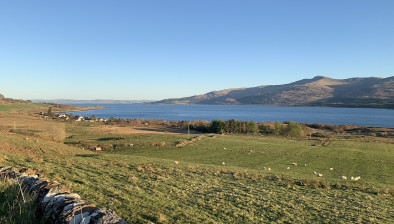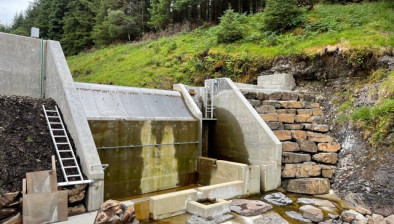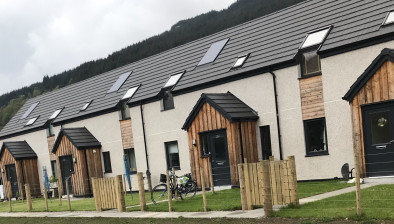New finance confirmed for Lochaber community hydropower scheme
The development of a high-head (142m) hydropower scheme on the Barr River near Loch Teacuis in Lochaber has secured a new finance arrangement from Triodos Bank UK and the Scottish Investment Bank.

Once installed, the scheme is expected to have a 1.6MW capacity and to generate approximately 4,269,000 kWh each year – enough to power over 1000 homes. It will take approximately 14 months to build and is expected to operate for at least 50 years.
The community has been exploring the potential for a shared-ownership hydropower scheme since 2013. Now this new finance will help with the construction and operation of the hydropower scheme by MorVolts Ltd, a wholly owned subsidiary of the Morvern Community Development Company (MCDC), a registered charity that aims to benefit the community of Morvern.
Jane Stuart-Smith, chair of the Morvern Community Development Company, said: “We are delighted to have reached financial close and can now begin building the scheme. Getting to this point has taken a huge investment of local volunteer effort sustained over many years.
“Morvern is a delightful place to live and work but it faces challenges to maintain a sustainable community in a remote rural community location. MCDC has a strong track record in creating and delivering local infrastructure projects.
“The income from the scheme will be an important source of investment into the local development priorities. There is an increasing focus on community involvement in energy networks. The scheme also gives the Morvern community a strategic stake in the energy supply on the peninsula.”
A total of £6.49 million of funding has been secured for the project, made up of a £4.26m Triodos Bank loan and £2.23m from the Energy Investment Fund, which is administered by the Scottish Investment Bank on behalf of the Scottish Government.
Paul Wheelhouse, minister for energy, connectivity and the islands, said: “I am pleased that Morvern Community Development Company’s MorVolts Barr Hydro scheme has reached financial close. Morvern are a fantastic example of what an empowered community can achieve, with a great track record in project delivery and actively engaged in planning for their future.
“The Scottish Government through our Community and Renewable Energy Scheme (CARES) delivered by Local Energy Scotland, has been assisting Morvern since 2014, providing both advice and funding support and I am pleased our Scottish Investment Bank has been able to contribute £2.23m through the Energy Investment Fund to make it happen.
“At 1.6 MW, the scheme is, I understand, the largest hydro in the UK to be entirely community-owned and that is a tremendous achievement for Morvern. I am also really delighted that all profits from the project will be channelled back into the community to support local priorities and, I am sure, this will make a real and positive difference to the lives of local people and this is why we are keen to see more projects such as this.”
Philip Bazin, environment manager at Triodos Bank UK, said: “This is a great example of a community energy project – bringing people and organisations together to do something for both people and planet. It is encouraging to have success stories like this right now of people coming together to overcome the challenges brought about by the current crisis.”
Many different groups have come together to make this work, including the Scottish Government, Scottish Investment Bank and Forestry Land Scotland.
Kerry Sharp, director, Scottish Investment Bank, said: “Scotland has been harnessing the power of water through hydro-electric schemes for more than one hundred years, particularly in the Highlands where hydro has been crucial in connecting remote rural communities to the grid.
“As well as being a big part of Scotland’s energy past, the support for the Barr River project proves that hydropower can be a major part of Scotland’s energy future. We’re genuinely excited to help MCDC continue to capitalise on Morvern’s natural and built environment for the benefit of the local community.”








